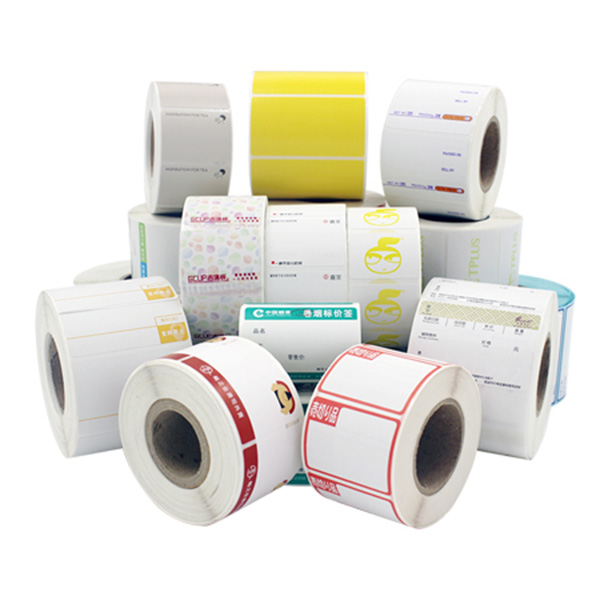With the continuous advancement of technology, label printing technology is also constantly innovating. Liner thermal labels and linerless thermal labels are the two most common types at present.
This article will focus on the characteristics, differences, and application scenarios of these two tags.

1. Thermal label with liner
Backed thermal labels (also known as adhesive labels) have a polyester film as the outer material and an adhesive backing on the bottom to allow them to be attached to other items. This kind of label can be printed by a thermal conductivity printer, and compared with a linerless thermal label, a liner thermal label is more resistant to water, moisture, and acid and alkali.
2. Linerless thermal label
The linerless thermal label (on-site thermal label) does not have a bottom adhesive layer, and the material on the label can be printed directly by a thermal printer. The characteristic of this type of label is that the sticker is clean and there is no problem of residual glue after peeling off. With no bottom adhesive layer, linerless thermal labels are also thinner and lighter.
3. Difference
The difference between the liner thermal label and the linerless thermal label is mainly reflected in the following aspects:
– Different materials: Liner thermal labels use polyester film as the outer material with adhesive backing, while linerless thermal labels do not have a bottom adhesive layer.
– Different printing methods: thermal labels with liner need to be printed by thermal transfer printer, while thermal labels without liner can be printed directly on thermal printer.
– Water resistance and acid and alkali resistance are different: since thermal labels with liner paper are protected by the bottom adhesive layer, they are more resistant to water, moisture, and acid and alkali than thermal labels without liner paper.
Application scenario:
– Thermal label with liner is suitable for situations where it needs to be printed on the label and attached to other items. For example, express bills and cargo labels commonly used in the logistics industry mostly use thermal labels with backing paper.
– Linerless thermal labels are suitable for situations where the stickers need to be clean without residual glue after peeling off. For example, supermarket product price labels and hospital temporary medical record stickers often use linerless thermal labels.
Summarize:
The thermal label with liner is suitable for the scene that needs to be pasted on other items, and has better waterproof performance and acid and alkali resistance; while the thermal label without liner is suitable for the scene that requires clean stickers and avoids glue residue. According to different needs, you can choose the appropriate thermal label type.
Copyright © Suzhou Guanhua Paper Factory All rights reserved.